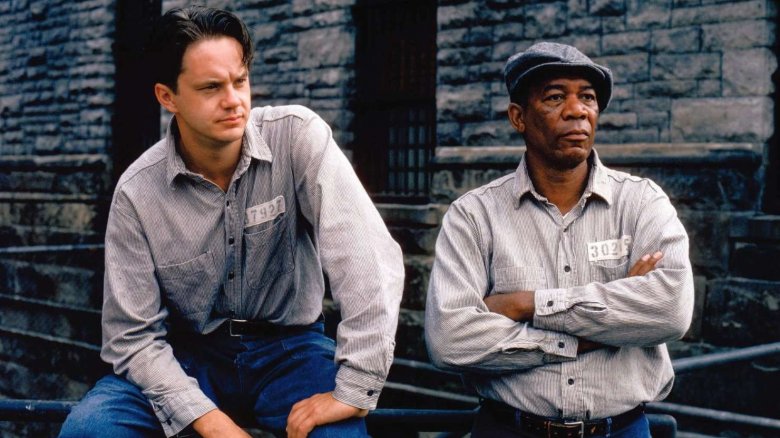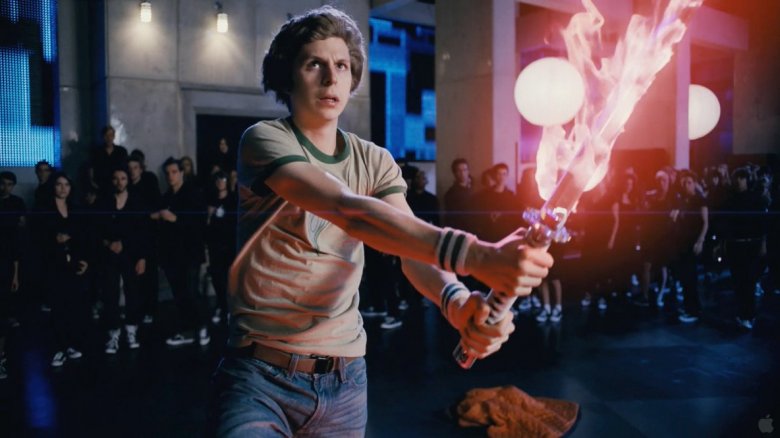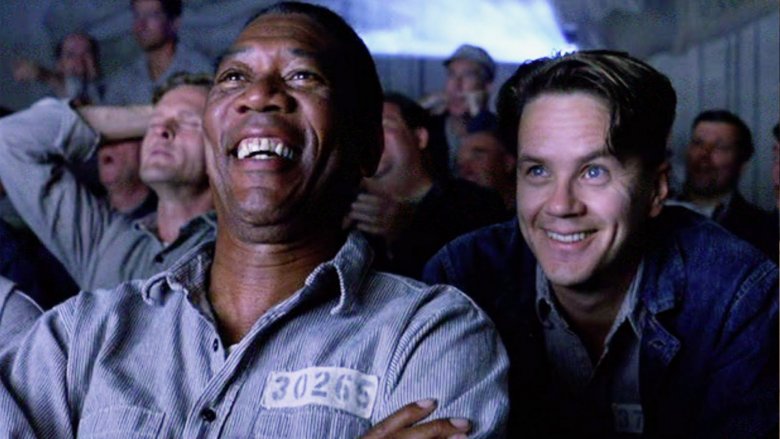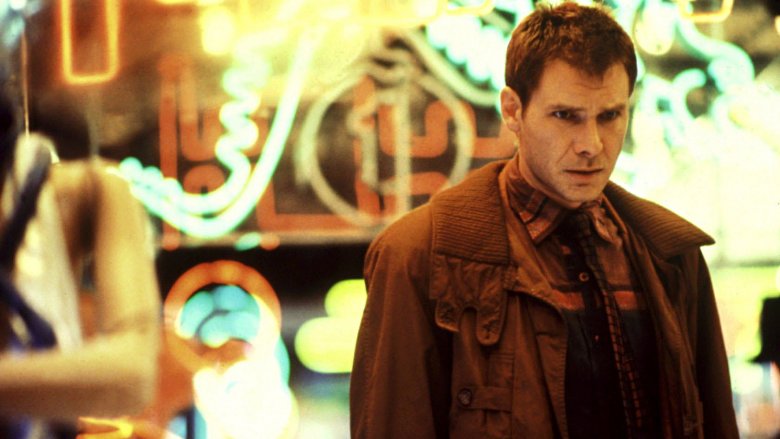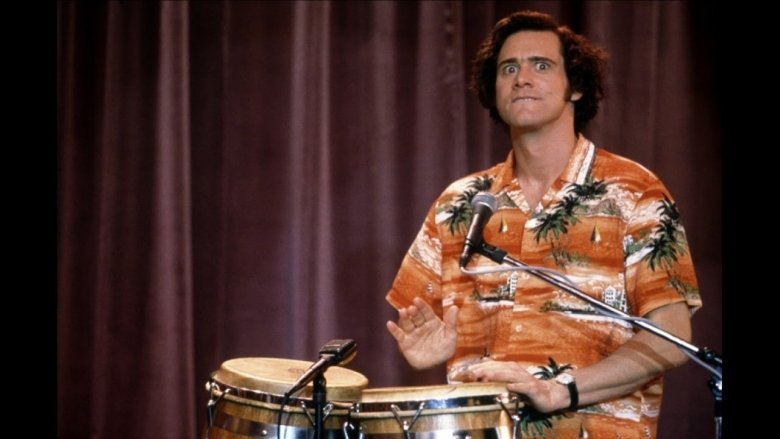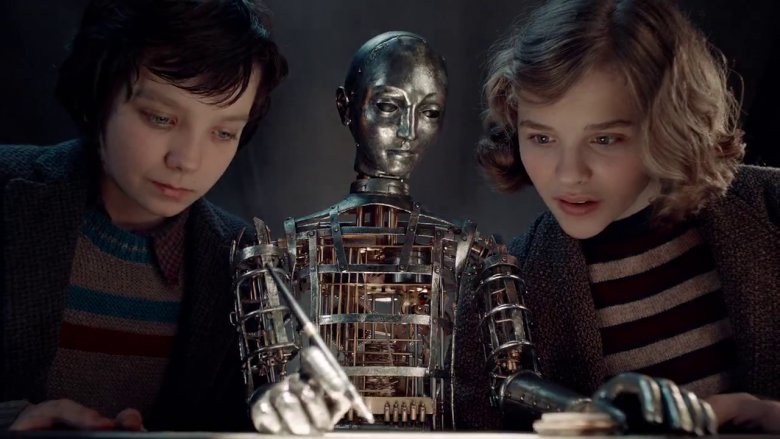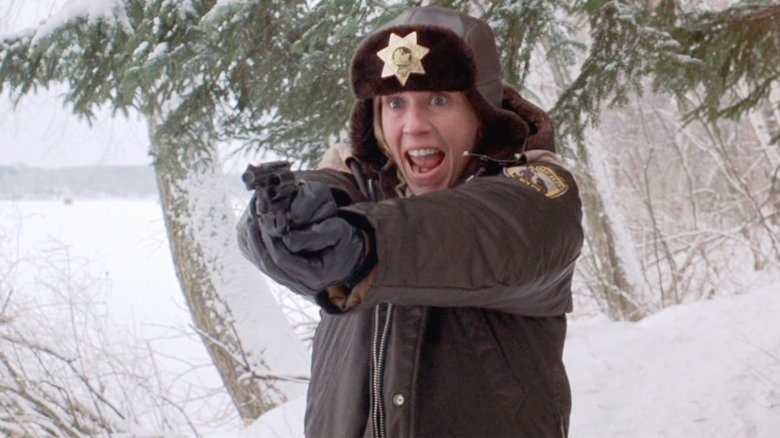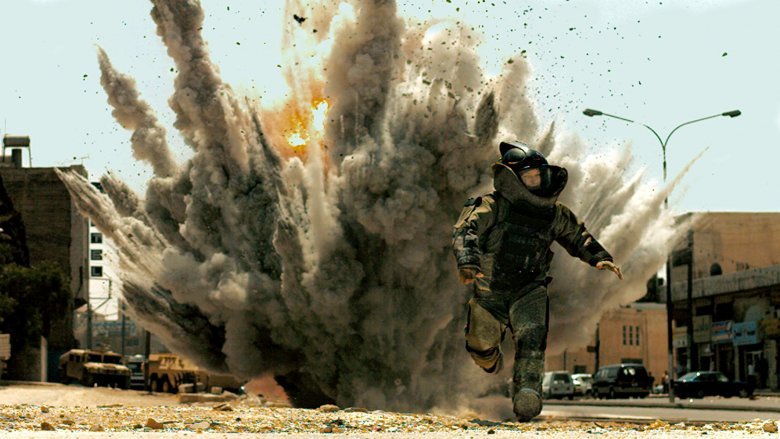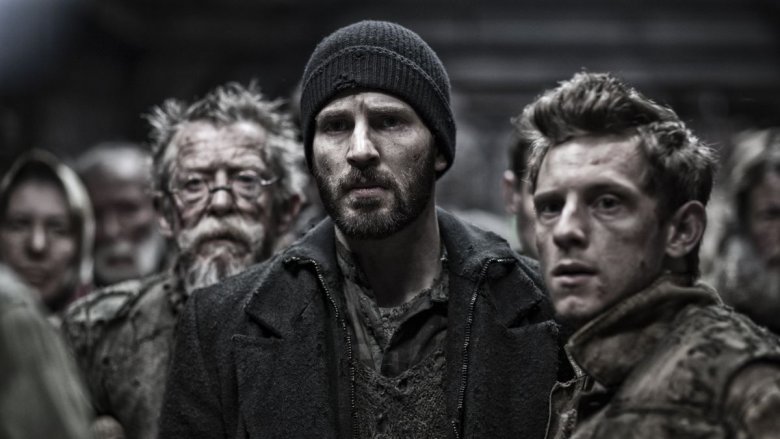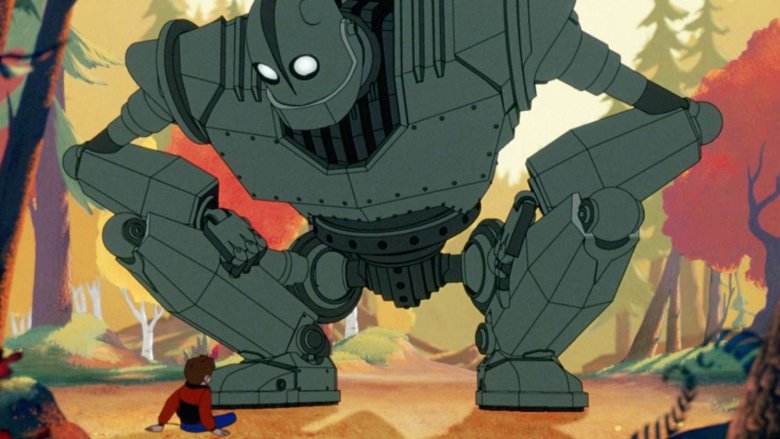Critically Acclaimed Films No One Saw In Movie Theaters
If a film earns widespread critical acclaim but audiences don't turn out to watch it in theaters, is it still worth your time? That's a question that has been posed numerous times in recent years in response to the lackluster profits of tentpole films like Blade Runner 2049 and Solo. Money is the great equalizer in Hollywood. While it's always interesting to read about big movies, and the big budgets that accompany them, just because an intended blockbuster didn't bring in the cheddar, does it mean the film's trash? Absolutely not. Some of America's best movies were box office bombs.
As often as we hear about movie studios breaking box office records, there are critical darlings bringing producers and directors awards season clout. An Oscar or Golden Globe nomination may bring the prestige, but if that buzz doesn't translate into box office success, that becomes the focus — and it shouldn't be. This collection of critically acclaimed films presents just a few examples of fantastic movies that audiences passed on when they were in theaters.
Scott Pilgrim vs. The World
2010's Scott Pilgrim vs. The World struck a delightful balance between the ultraviolence of a Quentin Tarantino movie, the sensibilities of an 8-bit video game, and the heartfelt joy of a Wes Anderson dramedy. With Michael Cera (Arrested Development) playing the film's quirky hero, it felt as if the movie was destined for box office greatness. Cue disappointed sigh.
Universal Pictures shelled out a reported $60 million to make the film, and future stars like Mary Elizabeth Winstead (Fargo, Brain Dead), Anna Kendrick (Pitch Perfect), and Chris Evans (Captain America) rounded out the cast, but none of that helped the studio earn back its money. Bringing in a meek $31 million domestically, the movie did at least end up winning over critics, with Peter Travers of Rolling Stone raving, "Scott Pilgrim is a breathless rush of a movie that jumps off the screen, spins your head around and then stealthily works its way into your heart."
So why didn't more people rush to theaters to see Scott Pilgrim battle each of Ramona Flowers' evil ex-boyfriends? As TheWrap argued, you can probably chalk it up to a combination of poor marketing, the yet-to-be-popular comic-book movie formula, and the lackluster star power of Michael Cera. In the end, it seems audiences didn't know what the movie was — or that it even existed to begin with.
The Shawshank Redemption
Frank Darabont's big-screen adaptation of Stephen King's novella "Rita Hayworth and Shawshank Redemption" received a total of seven Oscar nominations. That's a big accomplishment in and of itself. However, the 1994 film, starring Tim Robbins and Morgan Freeman, ultimately failed at drawing in audiences. As much as we remember The Shawshank Redemption as a heartwarming prison drama, when the movie hit theaters, it barely scraped past $25 million at the box office.
As much as it might have been a monetary failure for Columbia Pictures, the film collected a whole slew of rave reviews from critics. "It is a strange comment to make about a film set inside a prison, but The Shawshank Redemption creates a warm hold on our feelings because it makes us a member of a family," wrote Roger Ebert, continuing, "It is deeper than most films; about continuity in a lifetime, based on friendship and hope."
Time has proven to be on Shawshank's side, though. Not only is the film in IMDb's list of 250 greatest films of all time, the prison later found new life in Hulu's Stephen King-inspired series Castle Rock.
Blade Runner
Before it was cool to adapt the works of sci-fi author Philip K. Dick, Ridley Scott took on the challenge of turning one of the author's stories, "Do Androids Dream of Electric Sheep?," into Blade Runner. Harrison Ford's acting career was on an upswing at the time, with characters like Han Solo and Indiana Jones cementing him as the action star to watch. In an attempt to show his range, Ford signed on to play android-hunting investigator Rick Deckard — yet his diversion from the dry humor and ruggedness audiences had gotten used to ended up shooting the movie in the foot.
As cinematically groundbreaking as Ridley Scott's film was, fans just weren't ready to see Indiana Jones mope through Blade Runner's rain-soaked streets. It also didn't help that Scott's neo-noir tale premiered just one week after Steven Spielberg's E.T. hit theaters. Blade Runner, which pulled in just $32.9 million, ended up, much like its 2017 sequel Blade Runner 2049, being a box office dud.
They say time heals all wounds. And in 1993, the Library of Congress recognized Ridley's movie by placing it in the United States National Film Registry for being "culturally, historically, or aesthetically significant."
Man on the Moon
In the late '90s, Jim Carrey was, without a doubt, at the top of Hollywood's food chain. With the successes of films like Ace Ventura, Dumb and Dumber, The Mask, Liar Liar, and The Truman Show under his belt, it felt as if he could do no wrong. And when he teamed up with Miloš Forman (One Flew Over the Cuckoo's Nest) to bring Andy Kaufman's (Saturday Night Live, Taxi) story to the big screen, it felt like a no-brainer that the rubber-faced, often-misunderstood comedian would pay tribute to one of his heroes.
Unfortunately, it wasn't the hit the studio had been hoping for. As long as Carrey was delivering belly laughs, audiences came flocking. But, much like with his turn in the Ben Stiller-directed dark comedy The Cable Guy, fans weren't sure how to react to a more dramatic turn for the actor.
The movie only earned a little more than half of its $82 million budget. While Universal took the hit with that loss, the film was celebrated by critics. And, as seen in Netflix's documentary Jim & Andy, Carrey went completely Method in bringing Kaufman to life — work that won him a Golden Globe and helped pave the way for more serious roles.
Hugo
When you hear the name Martin Scorsese, chances are images of Robert De Niro in various states of mafioso madness come to mind, but the director took a break from mob movie formula in 2011 with the kid-friendly fantasy Hugo. The story, which followed Asa Butterfield's Hugo as he unravels a mystery through automaton riddles and historical clips of early 20th-century cinema, was a spectacle to behold.
During its theatrical run, however, the movie didn't even come close to breaking the bank. Hugo still earned a total of 11 Oscar nominations that year, adding to the director's long history of critically acclaimed films.
So why didn't Hugo bring in the box office bucks? One word: competition. As the Los Angeles Times points out, the movie arrived just one week after The Twilight Saga: Breaking Dawn – Part One, and Disney brought a new Muppets movie to theaters at the same time. Basically, the combination of sparkly vampires and Kermit the Frog was too much for Hugo to handle.
Fargo
In 1996, the Coen brothers brought a quirky reality-based crime yarn to the big screen. Simply put, Fargo was an outlier in the cinema world. With its stellar ensemble cast and intricate narrative, the Minnesota-set story was altogether more engaging than audiences at the time cared to realize.
The film ended up receiving seven Academy Award nominations in 1997, including a Best Actress win for Frances McDormand and a Best Original Screenplay win for Joel and Ethan Coen. As deserving as those accolades were, it's easy to forget that Fargo didn't make much of a dent at the box office; in fact, in its limited run, the movie only made $25 million. And while that's a definite profit on the film's $7 million budget, it wasn't a mind-blowing return on the studio's investment.
The Coen brothers are known for telling fringe stories — heck, The Big Lebowski was considered a flop when it originally premiered. But over time, their movies have found their place in pop culture. Is Fargo as relevant now as it was in the late '90s? If Noah Hawley's acclaimed FX series could speak, it'd probably belt out a hearty "You betcha!"
The Hurt Locker
Before they started protecting the world as Hawkeye and Falcon in the Avengers movies, Jeremy Renner and Anthony Mackie partnered up in Kathryn Bigelow's The Hurt Locker. Released in 2009, this gritty look at America's military in Iraq not only made Bigelow the first woman to win a Best Director Oscar, it put a more modern spin on the war movie formula. But as numerous timely war films have discovered, it's always a challenge to bring in mass viewership when the subject matter is a very real, and very recent, armed conflict.
When it comes to theatrical revenues, The Hurt Locker came out a clear loser in the box office battle, barely making back its $15 million budget domestically in a year that found Avatar, Harry Potter and the Half Blood Prince, Up, and Paramount's Star Trek reboot all vying for audiences' attention. There's something to be said for the sheer mindless joy of escapism that the movies offer — and unfortunately for Bigelow's acclaimed effort, viewers were more inclined to revisit Hogwarts than the Middle East.
Snowpiercer
Snowpiercer tells a dystopian tale about the aftermath of an environmental disaster that decimated Earth. The survivors that remain are left struggling in a bleak, heavily classist existence on a non-stop train. For writer-director Bong Joon-ho's film, profits were less important than telling his story — a creative focus underscored by the widely publicized struggle between the filmmaker and studio execs at The Weinstein Company who demanded edits for Snowpiercer's American release.
The director prevailed, but at a cost: the movie ended up being given an abbreviated limited release, and the studio declined to put much promotional weight behind its arrival, aside from Evans showing up on Comic-Con hotel VOD screens welcoming guests and encouraging them to screen the film from their rooms. The theatrical returns, unsurprisingly, were fairly dismal.
Ultimately, despite rave reviews, Snowpiercer earned just $4.5 million at the box office in the United States. Grosses overseas were far healthier, however, and the story still isn't over: if all goes according to plan, a Snowpiercer series starring Jennifer Connelly (Labyrinth, Requiem for a Dream) and Daveed Diggs (Blindspotting, Hamilton) will premiere in 2019.
The Iron Giant
Released in theaters in 1999, The Iron Giant was something of an animated anomaly. While audiences were flocking to theaters to see the adventures of Woody and Buzz Lightyear, Brad Bird disrupted the cartoon formula with a Cold War-themed film based on Ted Hughes' 1968 sci-fi fable, which follows the unlikely friendship between a young boy and a humungous robot from space. Before branching out with films like Ratatouille, Mission Impossible: Ghost Protocol, and The Incredibles movies, it was Iron Giant that put Bird on the map.
Unfortunately, it didn't bring in the crowds. Even with a voice cast that included Jennifer Aniston, Harry Connick Jr., and future superstar Vin Diesel, the $70 million movie ended up losing roughly $50 million. That said, Bird's movie has since earned cult classic status — affirming the accolades of critics like Stephen Hunter from The Washington Post, who predicted, "It's brilliantly animated, and like the masterpieces of its genre, it transcends age groupings. Children will love it, and adults will be transfixed by its cleverness and its deft satire."
